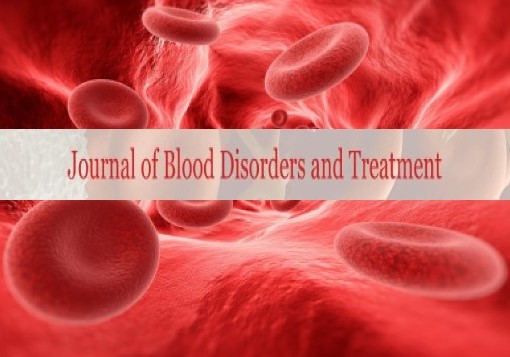Haemoglobin and Hereditary Mutation
Received: 08-Aug-2020 Accepted Date: Aug 20, 2020; Published: 31-Aug-2020
Citation: Elwany S. Haemoglobin and Hereditary Mutation. J Blood Disord Treat. 2020; 3(3):3.
This open-access article is distributed under the terms of the Creative Commons Attribution Non-Commercial License (CC BY-NC) (http://creativecommons.org/licenses/by-nc/4.0/), which permits reuse, distribution and reproduction of the article, provided that the original work is properly cited and the reuse is restricted to noncommercial purposes. For commercial reuse, contact reprints@pulsus.com
Haemoglobin
Haemoglobin is a basic cell part of the red platelets that assume the job of moving oxygen in the blood to the real tissues where it is required.
Sickle haemoglobin varies fit as a fiddle from the typical haemoglobin, with a bended sickle-formed instead of level circle molded cells. The shape changes the properties of the cells, making at that point become more unbending and less adaptable. Thus, the cells are bound to haemolyse and cause blockages in the veins that upset the progression of blood.
Hereditary Mutation
The particular quality change that outcomes in sickle hemoglobin includes a replacement of thymine for adenine (from GAG to GTG) on the 6th codon of the hereditary succession. This prompts the coding of valine instead of glutamate on the 6th situation of the hemoglobin beta chain.
This hereditary modification changes the physical properties of the hemoglobin cells, changing their shape to the trademark sickle shape and the physical properties, for example, dissolvability and solidness. It is these properties that represent changes in work and the regular complexities of the sickness.Genetic Inheritance Pattern
Sickle cell malady is an acquired condition that follows an autosomal latent example. This implies guys and females are influenced similarly and the two guardians must convey a quality change, regardless of whether they are asymptomatic, for the kid to be influenced.
At the point when the two guardians convey a solitary quality change, known as sickle cell attribute, there is a 25% possibility that the illness will create, 25% possibility that the youngster will be unaffected and a half that they will have a quality transformation as an asymptomatic transporter.
Pathology
When there is lacking oxygen in the vascular framework, sickle hemoglobin turns out to be significantly more insoluble, expanding the polymer development in the blood and the general thickness. This prompts the development of tactoids, a gel-like type of hemoglobin that exists in balance with its standard solvent state. The extent of each kind relies upon:
• Oxygen nearness: more oxygen underpins commonness of the fluid state
• Sickle hemoglobin focus: more HbS underpins gel-like state
• Other haemoglobins: Normal grown-up and fetal Hb bolster fluid state
After some time, the film of the cells become for all time harmed, prompting cells for all time remaining in the bi-curved sickle shape, in any event, when the blood is presented to adequate degrees of oxygen by and by.
Difficulties
Introductory side effects of sickle cell infection will in general present in little youngsters around a half year to one year old, as the high centralization of fetal hemoglobin assumes a defensive job before this time. There are three fundamental entanglements that can emerge: sickle cell emergency, iron deficiency and various organ harm
Sickle cell emergencies may result because of the expanded consistency of the blood and the development of blockages in the veins. At the point when the inflexible cells bunch together, they can upset the progression of oxygen and limit the gracefully to tissues that require oxygenation. This outcomes in abrupt and extreme torment, known as sickle cell emergency, that typically require clinical administration.





